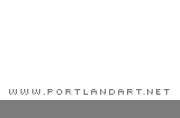
|
||
|
Portland art blog + news + exhibition reviews + galleries + contemporary northwest art
|
||
The Score October 2010 Because PORT's readers like to know what is up and because I like to keep score of sorts... The Score will be a new semi-monthly regular feature on PORT. It gives me a chance to do very quick reviews and or comment on things that I haven't been able to work into larger articles and reviews. What's more, because sometimes very worthy shows get completely ignored The Score gives me the chance to go back a month or so and note the notables that fell through the cracks. 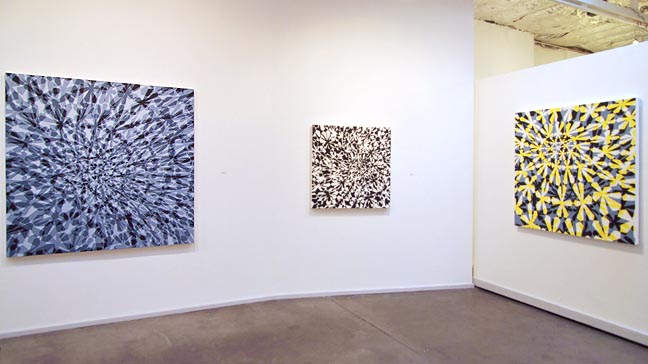 Michael Knutson at Blackfish The best new show up for the month of October 2010 was Michael Knutson's latest outing Translucent Fields and Cubic Knots at Blackfish. There's a mysteriously semi-opaque gauziness to some of the latest works in this show and the early works are fantastic in the way they point to later developments while working well enough on their own. There is scope and depth here, in fact it is by far the best Knutson show I've ever seen in Portland. What distinguishes it? It's the career scope and how well the individually excellent paintings play as a whole together. Overall, Knutson's latest coil and field paintings have a way out teasing out the way our optical acuity for pattern and gells into consciousness for the viewer. Interestingly, the paintings fall apart and turn into arbitrary texture close up but at farther distances seem to test our limits for sensing pattern... which is an important form of intelligence. The show ends today, see it or you miss one of the best shows of the year. 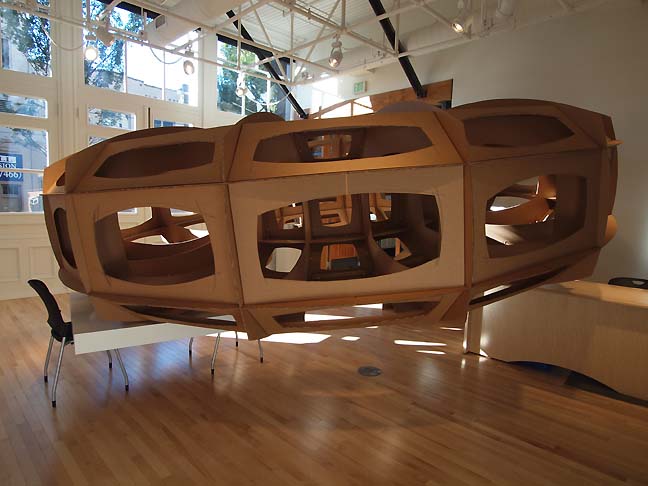 A work by Melis van den Berg at Ontologue As manifold explorations and calibrations of perceptual sensitivity the Knutson show plays very well with the Ontologue show at The White Box @ the U of O's Portland campus. In particular Melis van den Berg's Untitled cardboard manifold spatial strainer is the show stopper and like the Donald Judd show I co-curated in this space earlier this year this type of manifold form is a device by which one can look through and perceive the specific conscious perception of the moment. What is different than Judd's is that van den Berg's approach is provisional, somewhat improvisationally sited nature and the institutional play of the object resting on desks and chairs in the room. Curator and artist Joshua Kim's gallium pour (titled 1:17) is also highly successful as an early Richard Serra-esque lead throwing gesture. Definitely catch this show. The White Box has now put on three shows in 2010 which set a high bar for University Galleries in the Pacific Northwest partially because they are opportunistically open to outside curators bringing in very high level shows... you can do that for a year or two but it will take more to make that a permanent situation. 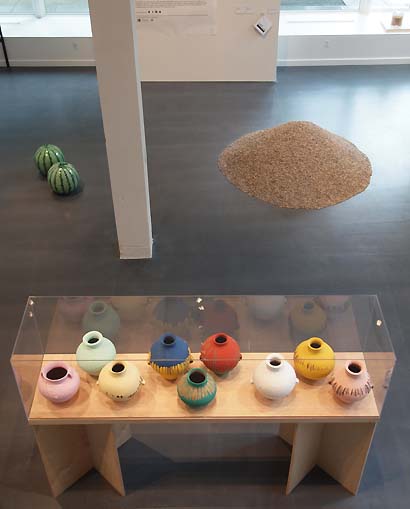 Ai Weiwei's breaking the Urn at the Museum of Contemporary Craft Ai Weiwei's solo show Breaking The Urn is a landmark moment for the Museum of Contemporary Craft with a truly serious world class exhibition to put it on the map. Do not miss it, today is the last day. Sure, Weiwei is China's most famous living artist, known for his wry and necessarily slippery persona as much as his art. Honestly it has to be expected, when your main antagonist is the Chinese government you end up always playing defense and Weiwei's interview on PORT revealed a lot of supple deflection when pressed about Dada and China. But the fact remains his work is essentially a well executed dadaist gesture put in the service of considering China's heritage and changing situation. Weiwei intentionally frustrates because he plays the middle ground, which is something you can do if you are a second generation cultural critic under an oppressive regime. He isn't terribly radical... he's actually a proponent of old fashioned common sense wrapped in the guise of arch foolishness... a kind of Alexander Pope or Swift for today's China but I think that's what is needed right now. In fact, a lot of his work come off as one-liners but I think he's wisely creating a persistent and cumulative effect to his exploration of paradox. Lastly, Weiwei is actually not a craft artist (he's a cultural critic of sorts) but he does explore the paradoxes of craft and value on a conceptual level and thus opens many interesting avenues of discussion for this museum, it isn't just about the making but the cultural baggage of objects that is interesting here. 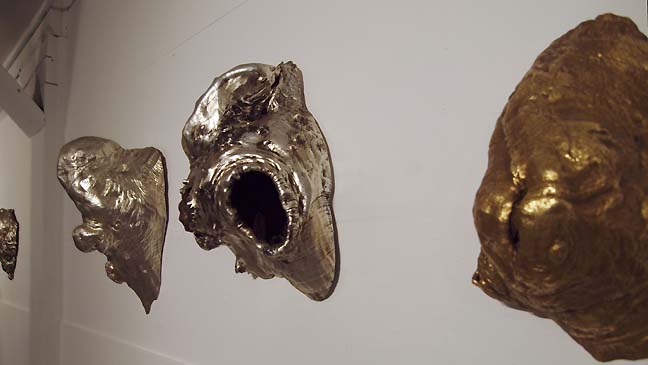 Bruce Conkle at Worksound Bruce Conkle's latest exhibition Magic Chunks at Worksound is probably his strongest solo show in Portland since his La La Zone Expedition at Haze Gallery in 2004 (a show which I consider one of Portland's all time best efforts). Conkle is an artist who has a reputation for being non-commercial but like the La La Land show's video game stills Magic Chunks' readymade tree burls are incredibly collectable. What I like about this show is the sense of infinite jest Mr. Conkle creates with four distinct rooms. The alpenhorn/recycled wood shadow room call to mind the tooting of ones own horn that accompanies using reclaimed materials, the burls are also simultaneously grotesque and sexy, pantomiming the societial fetishing of art made by cutting growths off of trees. With Magic Chunks Conkle reiterates the fact that he is THE valedictorian of the Pacific Northwest's ample crop of Enviro-artists, partially because he lampoons his own hypocrisy in the whole discussion. Overall Worksound has really been doing strong shows this season (probably the strongest alt-space shows in Portland) but they should get some interns for expanded hours... people want to see these shows. 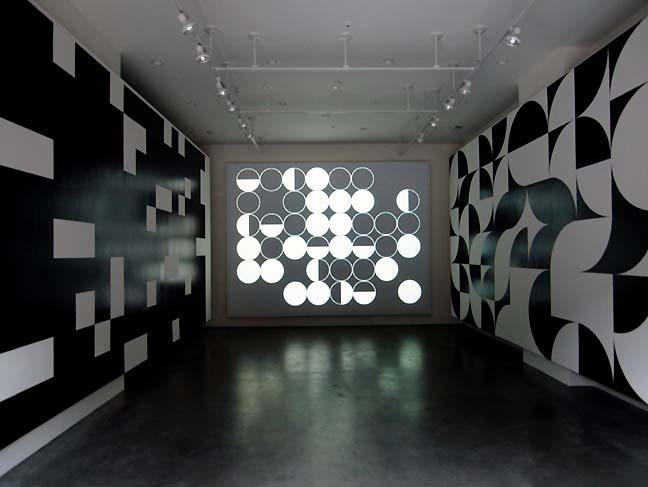 Arcy Douglass' Cloud at Chambers 916 Arcy Douglass's Cloud at Chambers... like Knutson, David Corbett and the Ontology show presents another manifold perceptual structure, in this case a video and two wall murals built from a systematic algorithm backed by some interesting aesthetic choices. By limiting the pallet to black and white Douglass (a PORT writer) foregrounds the binary off and on our digital wold runs upon while letting position become a massive exponential multiplier of potential outcomes... so much so it would take a single human over a trillion years to view the entire set of potential configurations. Why is this important? I suspect it has a lot to do with art's purpose... which is to present and and distill awareness of potential. Ironically this art machine becomes a bit like a landscape when viewed for a while since it resembles the different sense of scale and rate of change we note when viewing a landscape. The show ended last week 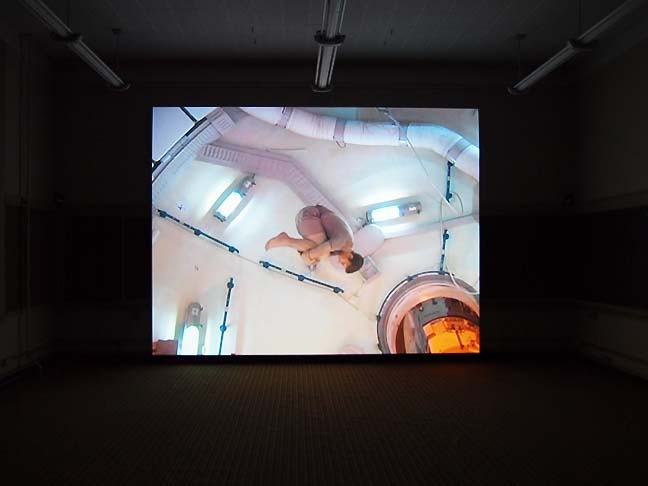 Christopher Miner's The Safest Place at TBA What did I think of TBA festival's On Site visual art programing this year? The Human Being curatorial theme started strong with Christopher Miner's The Safest Place with an astronaut spinning 2001/fetal position style and the classic 70's narration piece The Girl Chewing Gum by John Smith but it started to unravel into the old more is more thing that happens with festival art. I felt like Storm Tharp and Jessica Jackson Hutchins provided interesting experimental but diffuse shows that further sidetracked viewers by the time they went through Charles Atlas' Tornado Warning. Honestly, Tornado Warning seemed like excellent somewhat bombastic festival art but it needed a quiet yet strong counterpart to bring the curatorial theme together and Dan Gilsdorf's installation didn't do that, neither did Tharp's or Hutchins (Hutchins video was the real star and if it had been featured more it might have done the trick). The so called People's Biennial felt like such an old rehash of numerous other shows that I would have welcomed crayon drawings by 200 1st graders instead. Not that The Peoples Biennial was bad, just that it was anonymous compared to similar shows (2002 Whitney Biennial, or Harrell Fletcher and Red 76's projects over the last decade anyone?) and 1st graders can be counted on for freshness that felt missing here. Overall,TBA's visual arts started out tight and ended up seeming like a looser festival style (it is a festival after all... but they were so close it hinted that they could do it if they only followed through and concentrated more). I would love to see TBA's visual arts offering take a tighter approach like they used to have before they sacked their gallery program in 2004. I can't shake the feeling that Portland has grown up a lot more than PICA's visual arts offerings have... maybe that's good? maybe not. 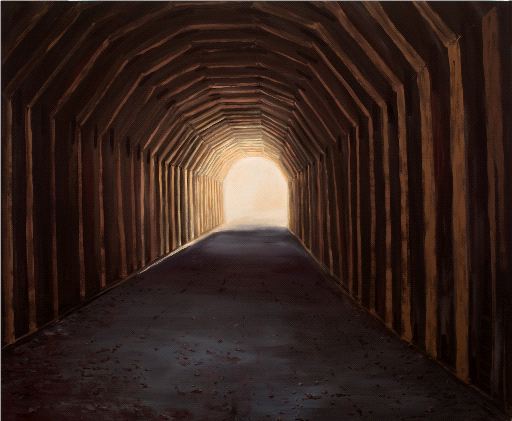 Michael Brophy's Tunnel 2010 Michael Brophy's last show Outside in September at Laura Russo Gallery was the opposite of a breakout... it was the a stunning solidification of a painter whose world had been rocked by fire and subsequent person turmoil. In a way this was his best show to date with strong compositions that belied a worldview that had suddenly become more sure after some serious testing. I like to think the truly talented always come back stronger after being tested and it's nice to see Michael obviously making that distinction obvious. His compositions were consistently bolder, his brushwork clearly surer and overall more variety than we've ever seen in a Brophy show.... and it all worked. 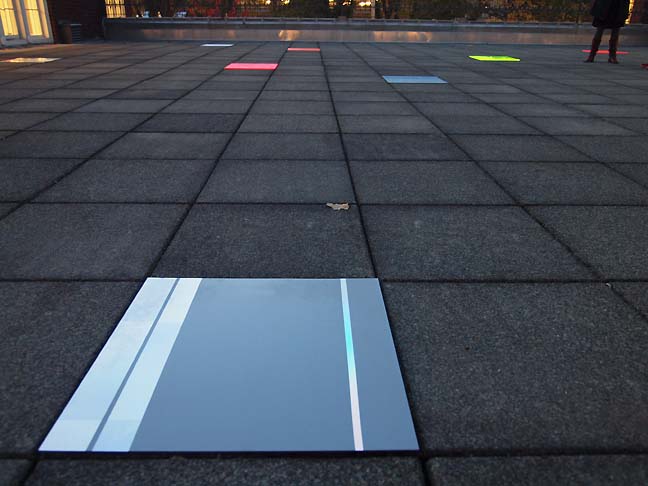 Laura Hughes' Relative Ground at PSU Laura Hughes latest Relative Ground consists of numerous colored Plexiglas tiles on PSU's Shattuck Hall open air roof grid. Some fluoresce, others have iridescent film underneath them. It's another experiential piece using her stripe and fluorescent vocabulary (which looks a lot like Jacqueline Ehlis here) but this one is fully outdoors. After an attention getting rapid series of shows she seems to be building up to large scale public art commission... but I'd like to see her concentrate on a major statement show a year from now or so too. As it stands this kind of experimental show is interesting for where it might lead but it doesn't feel like the fully formed statement show a lot of people will be looking for from her now. ... and that is the score. Posted by Jeff Jahn on October 29, 2010 at 23:12 | Comments (0) Comments Post a comment Thanks for signing in, . Now you can comment. (sign out)
(If you haven't left a comment here before, you may need to be approved by
the site owner before your comment will appear. Until then, it won't appear
on the entry. Thanks for waiting.)
|
| s p o n s o r s |
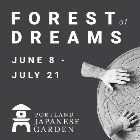 |
 |
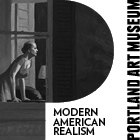 |
 |
 |
 |
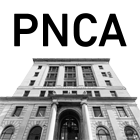 |
 |
 |
 |
 |
 |
 |
 |
 |
 |

|
Site Design: Jennifer Armbrust | • | Site Development: Philippe Blanc & Katherine Bovee | |
